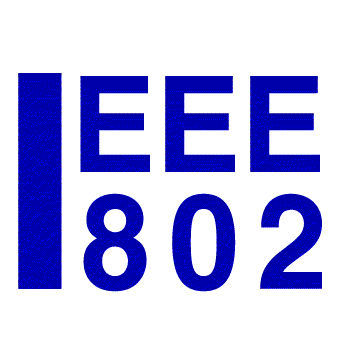Terminology
They are the same. Only the name of this technology has evolved over time. The OPC Foundation is changing to the official name OPC UA FX. The OPC UA FX includes TSN technology, even though it is not mentioned in the name anymore. The abbreviation UAFX may be used after first mentioning OPC UA FX as the main reference.
The OPC UA FX specification has been developed in two phases. C2C standard for Controller-to-Controller specification and C2D for Controller-to-Device specification. The C2C specification was completed in 2022. Work on the C2D specification is ongoing. C2D will reuse concepts and technologies from the C2D specification and add support for field device-specific use case. These include, for example, motion devices and sensors.
Connectivity and the Industrial IoT
The OPC UA FX standard is supported by all major automation suppliers. It ensures vendor-independent interoperability for all current and future relevant industrial use cases.
OPC UA FX enables secure-by-design modular machine concepts and flexible production architectures on the shop floor. These help users streamline their machines and systems for economical batch-size-one production. It also provides secure insight into manufacturing processes for ongoing performance optimizations and predictive maintenance – without disturbing machine operations.
OPC UA FX is neutral, 100% open, significantly faster, and secure. It can increase the ability to innovate, maximize OEE, reduce TCO and streamline commissioning and maintenance.
Today's proprietary fieldbus systems communicate using raw data – just zeros and ones. Without the corresponding tables, devices on the network do not know how to interpret this data. This makes it impossible to achieve the kind of seamless communication required in the Industrial Internet of Things (IIoT).
With its information model, OPC UA adds semantic descriptions to raw data with. This gives it context and meaning, so that any device or person receiving the information can interpret it correctly without any further explanation.
OPC UA provides so-called “methods” that enable direct interaction with assets. Machines can query each other to find out what kind of services, interfaces, and capabilities they provide –enabling them to interact more efficiently and autonomously.
For more information on the OPC UA information model and why we need semantics, see the OPC Foundation website.
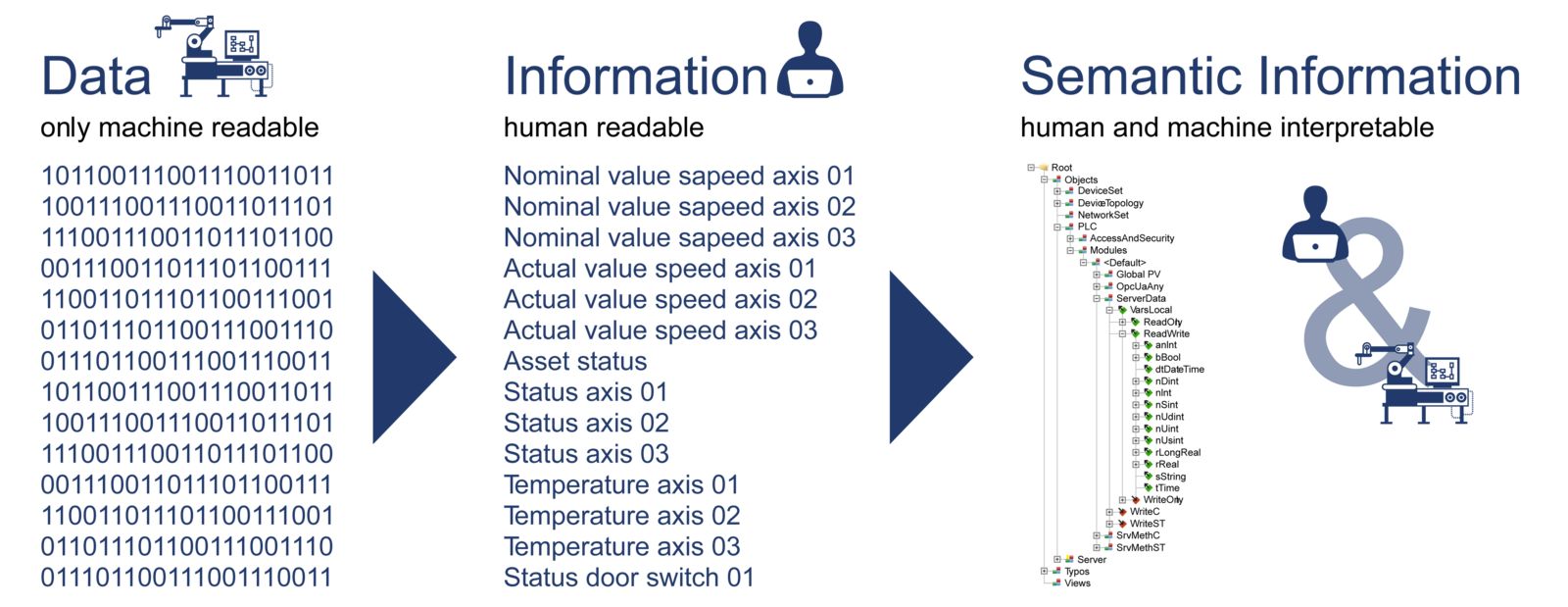 |
OPC UA FX includes TSN (Time Sensitive Networking) technology. TSN's determinism allows machine-to-machine OPC UA communication to better synchronize a multi-vendor plant floor. The same holds true for device-level communication within the machines themselves.
OPC UA provides a standardized way to structure data and securely adds semantics for any kind of asset. TSN is the infrastructure, or the highway on which OPC UA drives in a deterministic way.
Without the interoperability provided by OPC UA FX, these multi-vendor communications would have to be hard-coded – adding exorbitant development costs and canceling out any gains in flexibility.
Industrial IoT applications are data driven – information is their lifeblood. OPC UA FX adds a vast array of sensors, actuators, and other automation devices to the available pool of information by extending the semantic self-description of the OPC UA information model down to field level.
The Industrial IoT promises us an ability to design efficient and effective production processes that are at the same time, cheaper and easier to commission and maintain. It also promises to allow profitable mass customization of products.
To achieve these goals, today's production lines will need to be transformed into flexible production units that allow continuous insight into their internal workings. This insight, combined with clever algorithms – even artificial intelligence – will be the fuel that powers ongoing performance optimizations and predictive maintenance.
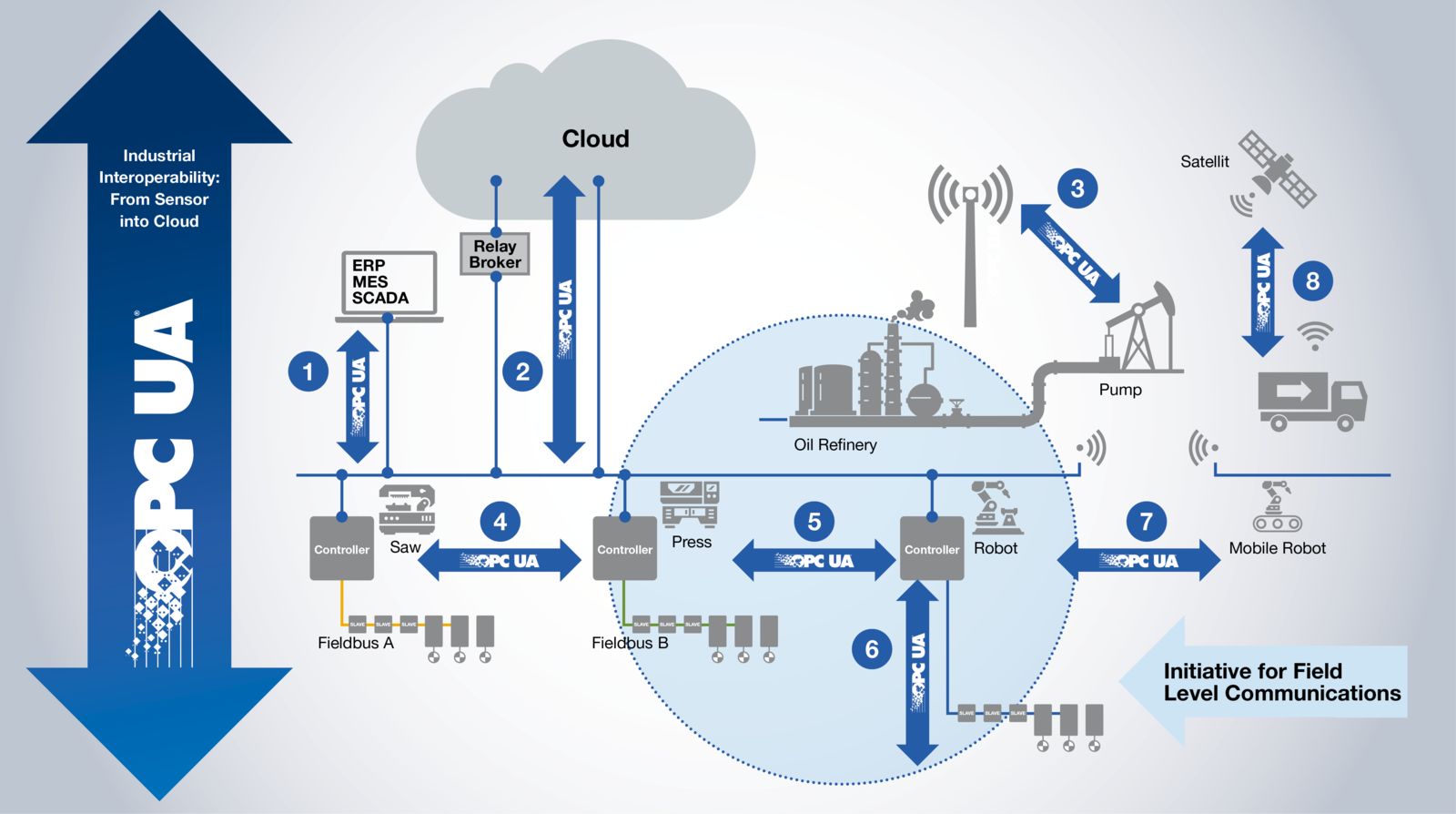 |
OPC UA form sensor to cloud.
Interoperability
It is true that we have gotten this far without it. Yet, to take automation to the next level, with the ready exchange of information, digitalization of manufacturing and the rise of smart factories and autonomous operations – interoperability is an essential steppingstone.
Interoperability brings added speed, flexibility, and cost-efficiency, without which it is impossible to implement the advanced data acquisition, analysis and optimization required for the Industrial IoT.
As a framework for thinking about communication systems, the OSI reference model divides them into seven conceptual layers – from the connectors and cables up to the user interface.
To ensure seamless interoperability on a network, you need interoperability on all seven of these layers. OPC UA delivers secure information interoperability on layers 5-7, allowing secure vertical communication from the sensor to the cloud. Interoperability on layers 3 and 4 is ensured through common IT standards. Layer 1 is covered by the Ethernet standard.
As the final piece in the puzzle, Time Sensitive Networking (TSN) brings interoperability to layer 2, the data link layer. This makes it possible to use OPC UA for precise real-time applications in converged OT/IT networks with unprecedented performance.
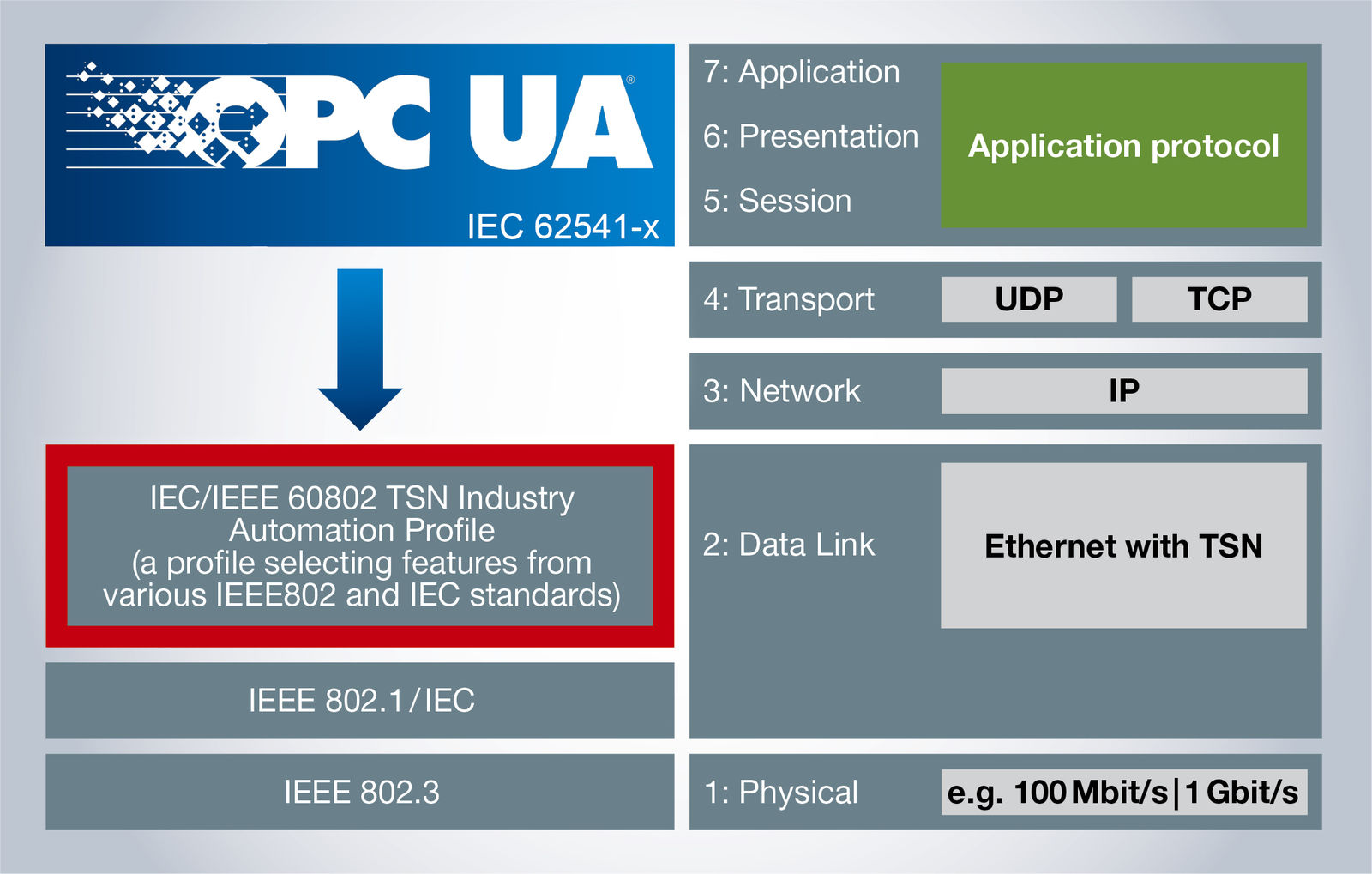 |
Ecosystem and standardization
OPC UA itself is developed and standardized by the OPC Foundation. The TSN standards are the responsibility of the IEEE 802.1 working group. To ensure a cohesive, open approach to implementation of OPC UA together with TSN and associated application profiles, the OPC Foundation launched the new Field Level Communications initiative. The director of the initiative is Peter Lutz, who leads and drives the initiative's development and specifications forward.
The technology will bring vendor-independent, end-to-end interoperability into field-level devices used in all areas of industrial automation. Integrating field devices and the shop floor will further solidify the OPC Foundation's role as the driver for a worldwide industrial interoperability standard. Standardization efforts for unified functionality currently taking place at the OPC Foundation include I/O, motion and safety applications.
The OPC Foundation's steering committee for field-level communications consists of 24 leading technology providers from the automation industry, including ABB, Beckhoff, Bosch-Rexroth, B&R, Cisco, Hilscher, Hirschmann, Huawei, Intel, Kalycito, KUKA, Mitsubishi Electric, Molex, Omron, Phoenix Contact, Pilz, Rockwell Automation, Schneider Electric, Siemens, TTTech, Wago and Yokogawa. Increasingly more companies are joining all the time.
  Image source: OPC Foundation |
Real-time communication is critical for industrial automation capabilities such as device-level control, motion control, machine vision and machine-to-machine (controller-to-controller) control. Yet, standard Ethernet was never designed to be a deterministic network, proprietary fieldbus systems therefore each implemented their own mechanisms to achieve deterministic behavior. TSN now extends IEEE 802 Ethernet to include real-time communication, providing a unified standard that meets the requirements of industrial automation.
TSN also makes converged networks possible, allowing the same network to manage both non-deterministic IT communications and deterministic OT communications, such as machine control and safety. In the future, the TSN standard will be a standard feature of mainstream Ethernet chips.
For more information, see Wikipedia and the Website of the IEEE.
Performance
The technology can address over 10,000 network nodes, scalable from 10 megabits to 10 gigabits and beyond. Testing conducted by B&R achieved cycle times below 50 microseconds with a jitter of less than ±100 nanoseconds in a network of 200 remote I/O bus couplers totaling 10,000 I/O points.
This level of performance makes proprietary fieldbus networks obsolete. OPC UA FX allows high-performance motion control traffic and bandwidth-intensive IT traffic on a single cable without interference between them.
A detailed white paper on the topic of OPC UA over TSN implementation can be downloaded from the B&R website.
B&R has thoroughly tested the performance of OPC UA FX. In the test setup, 200 network nodes are synchronized with a cycle time under 50 μs, while five HD streams are transmitted over the same network.
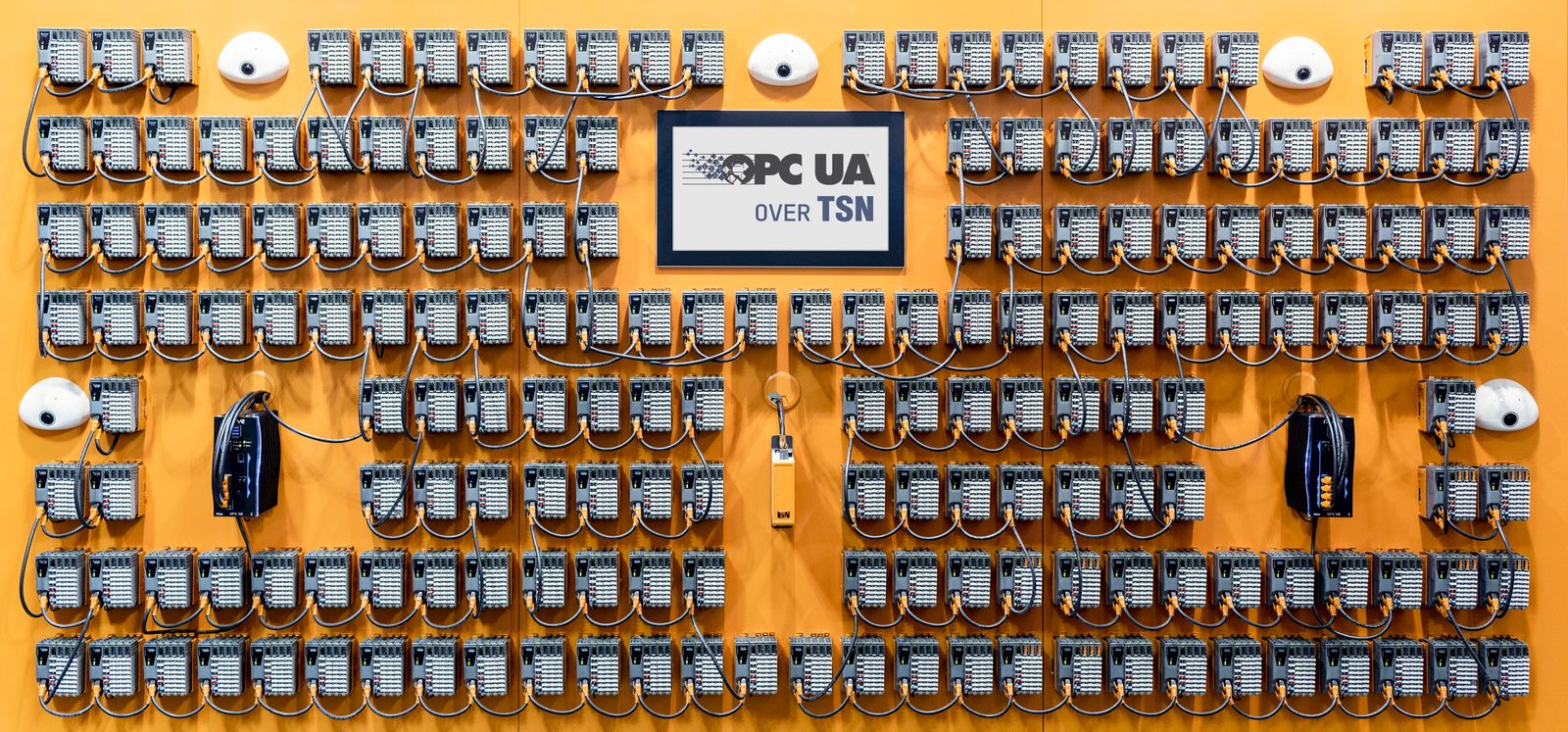 |
Cybersecurity and migration
Yes, OPC UA FX has complete built-in capabilities to address all cybersecurity needs. This is a big advantage over the decades old legacy fieldbus technologies. Cybersecurity experts use IEC 62443/ISA62443 standard as a reference for CRA compliance. This standard requires for example access control, user rights management and encryption to be used. OPC UA FX offers all these and much more.
OPC UA was designed to communicate with IT systems. OPC UA FX enables facilities to converge OT and IT networks without disturbing machine operations. This is all thanks to TSN and the use of OPC UA security mechanisms familiar to IT departments today, including user authentication and authorization, encryption and certificate handling.
The main advantages are openness, consistent semantics, security, and performance. The performance aspects include high bandwidth and guaranteed real-time communication.
Whereas a machine builder would otherwise need to support every major fieldbus, the combination of the OPC UA standard with TSN technology for real-time field-level communication gives you a single vendor-agnostic network and protocol all the way from the sensor to the cloud.
An end user may be concerned with converged networks, for example, and need the ability to use OPC UA to connect to the cloud over MQTT. Cloud, ERP and DCS platforms today support an OPC UA connector, simplifying communication. Regardless of the machine's manufacturer, OPC UA companion specifications allow the machines to describe themselves consistently with standardized semantics. The VDMA robot companion specification, for example, provides a standardized information model, which can present all robot-related information and functionality regardless of manufacturer or location in a uniform manner.
The ARC Advisory Group has published an informative brief on the subject.
The OPC Foundation has a good track record of its members supporting OPC UA. This is one of the reasons the OPC Foundation was chosen by the participating suppliers to develop OPC UA for deterministic communication using TSN.
Those 24 companies share a common vision and participate in a steering committee for the Field Level Communications initiative, dedicated to extending OPC UA for field-level communication over TSN for seamless OPC UA communication from sensor to cloud.
With their clear position in support of that vision, it can be expected that all 24 companies will release automation products with OPC UA FX. This momentum will convince other vendors and integrators to follow the market trend of a unified communication solution and contribute to the largest ecosystem of connected industrial automation solutions in history.
The topologies commonly used in industrial networks are all supported – including line, star, tree and ring. TSN includes a standard mechanism for seamless, real-time redundancy implemented through cable redundancy, ring or mesh topologies.
The supplier's development suite will provide everything necessary to make configuring simple and automated. For those who choose not to use the supplier's tools, the necessary configuration interfaces are open standards and additional third-party network tools are available.
Yes, because TSN is an evolution of standard Ethernet. TSN simply enhances standard Ethernet with real-time capabilities, it is therefore possible to have standard Ethernet devices and TSN devices present in the same network.
Standard Ethernet devices would not need an interface or gateway to connect with a TSN network. However, only TSN-capable devices will be able to communicate in real time.
Yes, it is possible to synchronize POWERLINK and OPC UA over TSN devices in B&R systems.
No. B&R has always followed a sustainable product strategy ensuring long-term availability of products and technologies. This will not change with the market introduction of OPC UA FX. B&R will support POWERLINK parallel to OPC UA FX in its extensive product portfolio. Customers will be able to select the best communication solution to suit their needs.
OPC UA FX technology support is already built into the majority of B&R's Automation PCs and PLCs. You can find a summary of OPC UA FX-ready products on this page
B&R solutions with OPC UA FX
TSN in combination with existing fieldbusses
The legacy fieldbus protocols would share a common TSN network, but the devices would not be interoperable. These protocols also lack the semantics and methods that OPC UA provides. OPC UA has built-in security and is recognized as an international standard for communication from sensor to cloud with new developments being continuously added.
The key difference is system interoperability: without it, you are locked into one vendor and one automation solution, with no ability to communicate or synchronize with other systems. In a multi-vendor system, this means you are unable to secure your communication and implement advanced functionality such as condition monitoring, line balancing, predictive maintenance, machine optimization and plug-and-produce startup and maintenance. If you are a machine builder, this limits the level of innovation your chosen vendor can support.
Availability
B&R portfolio already includes OPC UA FX Ready products. Conformance tested OPC UA FX products are expected to enter the market during 2025. Contact your preferred suppliers to learn more about their commercialization plans.
Stay informed
Subscribe to the OPC Foundation newsletter OPC foundation newsletter or ask your B&R representative. For participation and direct answers, you can also get in touch with Peter Lutz:
Peter Lutz, Field Level Communications Director
OPC Foundation
Peter.Lutz@OPCfoundation.org
